Cookbook #197: The Glucose Revolution Pocket Guide to Losing Weight, Kaye Foster-Powell, Jennie Brand-Miller, Stephen Colaguiuri, and Thomas M.S. Wolever, Marlowe and Company, NY, NY, 2000.
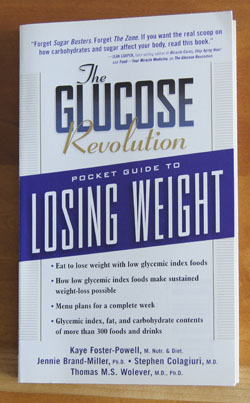 My Whole Foods basket overflowing with fresh fruits and vegetables, I rolled towards a sample table last Thursday. The enthusiastic young man had laid out samples of yet another protein bar for the sports enthusiasts of Boulder. I was about to pass on by, but I heard the words “low glycemic index” . . . that stopped me.
My Whole Foods basket overflowing with fresh fruits and vegetables, I rolled towards a sample table last Thursday. The enthusiastic young man had laid out samples of yet another protein bar for the sports enthusiasts of Boulder. I was about to pass on by, but I heard the words “low glycemic index” . . . that stopped me.
A little bell rang in my head: “I have a book on my cookbook shelf on the glycemic index of foods. I’ll do that book next, and in the meantime, I’ll buy one of his protein bars!”
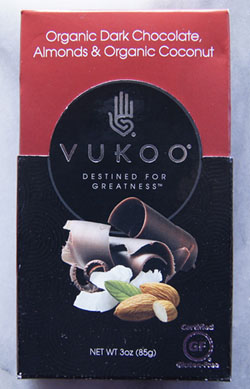 Little did that young man know that he was the inspiration for this week’s blog post.
Little did that young man know that he was the inspiration for this week’s blog post.
The Glucose Revolution Pocket Guide to Losing Weight is all about the “glycemic index” of foods. Why is the glycemic index important? Low glycemic index foods help stabilize blood glucose levels. Spikes in glucose are related to insulin levels, and thus to diabetes. For the dieter, low GI foods keep you feeling full longer. The Glucose Revolution Pocket Guide, page 9: “The glycemic index is a clinically proven tool in its applications to diabetes, appetite control and reducing the risk of heart disease.” One chapter gives sample diet plans, and another lists healthy snacking techniques. At the end of the book is a lengthy table of the glycemic index of many foods.
(I covered another cookbook for diabetics: The Calculating Cook. I’ve always found that while dieting, keeping a strict eye on carbohydrates is a must.)
How is the glycemic index of a food measured? The researchers recruit volunteers, feed them equivalent carbohydrate amounts of foods, then measure their glucose levels by sampling their blood over several few hours. All foods are compared with a reference food, pure glucose, which is arbitrarily assigned a value of 100.
Here are some sample glycemic index (GI) values (from this book):
- peanuts, 1/2 cup: 14
- barley, 1/2 cup: 25
- milk, 1 cup: 27
- kidney beans, 1/2 cup: 27
- garbanzo beans, 1/2 cup: 33
- apple, 1 medium: 38
- spaghetti, whole wheat, 1 cup: 37
- spaghetti, white, 1 cup: 41
- bread, 100% wheat bread, 1 1/2 ounce: 53
- sweet potato, 1/2 cup mashed: 54
- banana: 55
- potato, white, 1/2 cup mashed: 91
- bread, white french baguette, 1 ounce: 95
From the above examples, you see that foods that are not classified as carbohydrates such as peanuts or milk naturally have a low glycemic index (GI) value. Fruits in general are low GI. Legumes like garbanzos and kidney beans are low. Whole wheat bread has a GI of 53, while white bread has a value of 95. Sweet potatoes have a value of 54, while white potatoes have a value of 91.
Kind of justifies the old “health food” adage that whole wheat bread is better for you than white wheat bread. Go for complex carbohydrates!
I found that I had downloaded and saved a 2002 journal article on the topic of glycemic index – this subject has interested me for quite a while:
-
International table of glycemic index and glycemic load values: 2002, Kaye Foster-Powell, Susanna HA Holt, and Janette C Brand-Miller, Am J Clin Nutr, 2002;76:5–56.
Note that the lead author of this journal article is Kaye Foster-Powell, the lead author of The Glucose Revolution Pocket Guide to Losing Weight. The 2002 journal article defines a related value, “glycemic load”, which is the glycemic index normalized to the amount of carbohydrate in a particular food:
glycemic load, or “GL” + (GI x the amount of carbohydrate) divided by 100.
Kaye Foster-Powell is a co-author of a 2008 article on glycemic index:
-
International Tables of Glycemic Index and Glycemic Load Values: 2008, Fiona S. Atkinson, Kaye Foster-Powell, and Jennie C. Brand-Miller, Diabetes Care, 2008 Dec; 31(12): 2281–2283.
Both of the above articles have tables of GI and GL values. You can also search for the GI or GL value for a food online:
- The University of Sydney comprehensive site
- Glycemc Index Foundation, especially friendly, easy to understand list of foods to eat to go “low GI”
- Fitness Magazine low GI foods with a list of common foods that are low GI (GI under 55)
I especially like the University of Sydney site because you can enter a food and find out both its GI and GL. It’s a comprehensive site that explains all that you might want to know about glycemic index.
The Great Courses on nutrition
I am a big fan of The Great Courses, audio university-level lectures on a multitude of topics. Years ago I purchased “Nutrition Made Clear” by Roberta H. Anding; I highly recommend it. Dr. Anding discussed glycemic index in lecture 6, “Not All Carbohydrates Are Created Equal”, and lecture 22, “Metabolic Syndrome and Type 2 Diabetes”. She also referenced the 2002 J. Clin. Nutrition article by Foster-Powell, K. et al.
What to cook for this blog?
Since there are no recipes in The Glucose Revolution Pocket Guide to Losing Weight, I decide to cook a low GI/GL food and use it . . . somehow! I found some dried garbanzo beans in my pantry. Also known as chickpeas, they have a GI of 31 and GL of 9. I cooked a big batch in my electric pressure cooker.
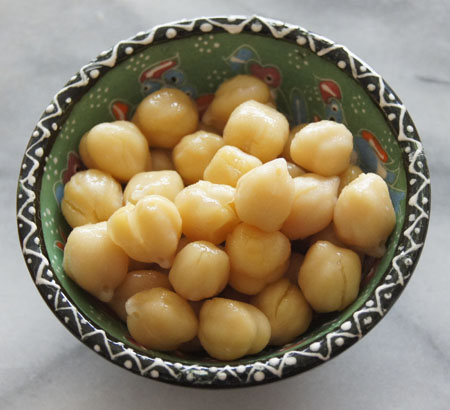 I will put these pretty beans in green salads and main dish salads (I have a great recipe for a Mediterranean salad). I can use them for hummus (I’ve made it many times before). They freeze well, so I froze several containers for later use. Garbanzo beans should be a healthy addition to our diet.
I will put these pretty beans in green salads and main dish salads (I have a great recipe for a Mediterranean salad). I can use them for hummus (I’ve made it many times before). They freeze well, so I froze several containers for later use. Garbanzo beans should be a healthy addition to our diet.
And what of the Vukoo bar? “Glycemic index” is not noted on the bar’s label. But the three major ingredients, oats (GL of 11), almonds (not a carbohydrate), and whey (a protein) do have low GL. The young man giving us samples claimed that half a bar kept one of his friends hunger-free for several hours. I found that little pieces of this bar kept me full between meals – it took me a week to finish it.
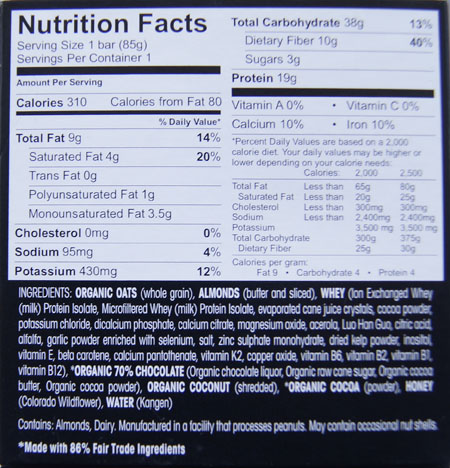

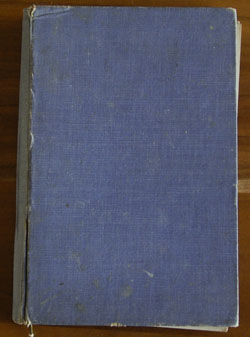
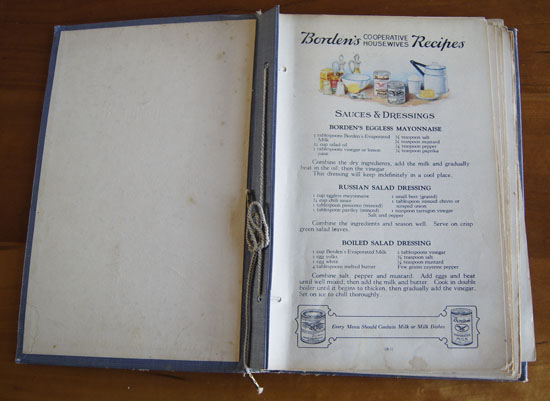 As you can see, the pages are held in with a string tie. The front of each double-sided page is headed with “Borden’s Cooperative Housewives Recipes” and a color illustration. Several recipes follow, and then the bottom of the page has a can of Borden condensed milk on the left, a can of Borden’s evaporated milk on the left, and a saying, like “Every Menu Should Contain Milk or Milk Dishes”.
As you can see, the pages are held in with a string tie. The front of each double-sided page is headed with “Borden’s Cooperative Housewives Recipes” and a color illustration. Several recipes follow, and then the bottom of the page has a can of Borden condensed milk on the left, a can of Borden’s evaporated milk on the left, and a saying, like “Every Menu Should Contain Milk or Milk Dishes”.
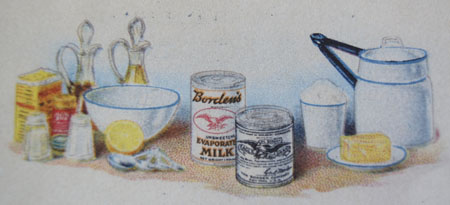
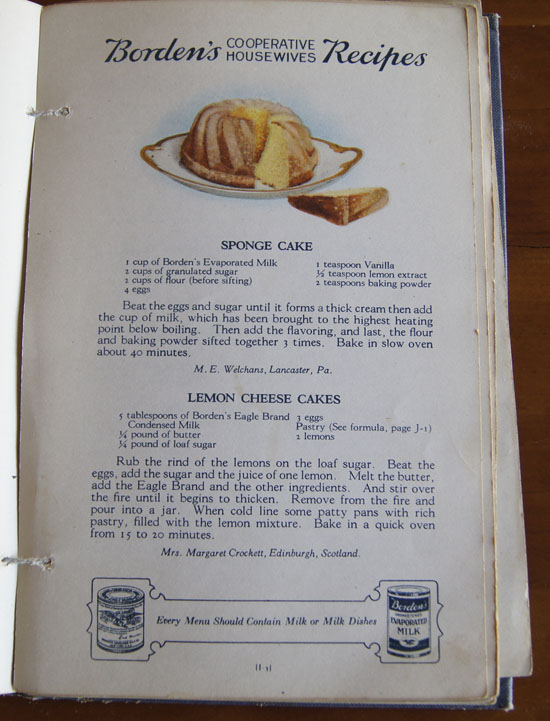
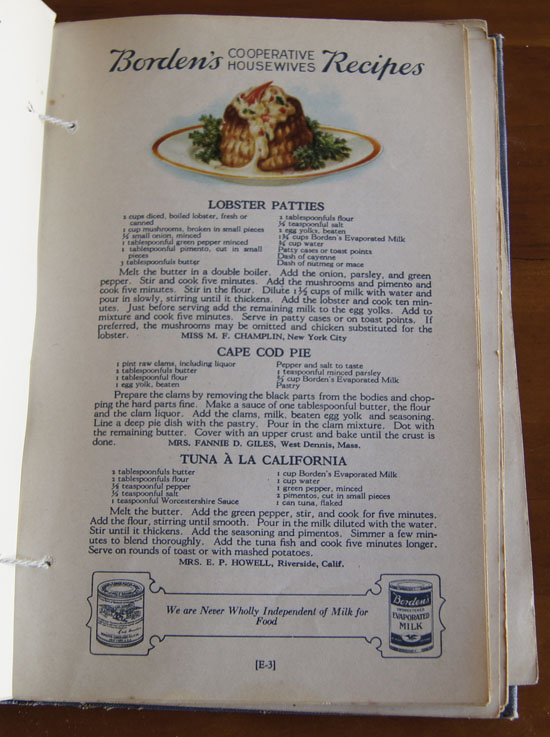

 The sticker on the MSU copy reads, “For delicious creamy coffee: Borden’s Eagle Brand Condensed Milk.” Perhaps the sticker on my copy fell off?
The sticker on the MSU copy reads, “For delicious creamy coffee: Borden’s Eagle Brand Condensed Milk.” Perhaps the sticker on my copy fell off?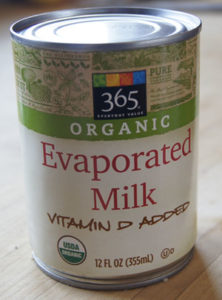 Evaporated and condensed milk as sold today
Evaporated and condensed milk as sold today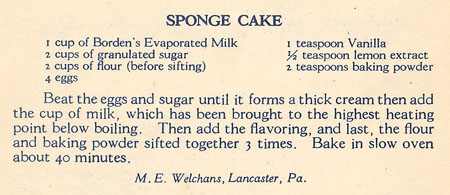 The photo of this cake (one of the photos earlier in this blog) show that it was baked in a bundt pan. I decide not to heat the evaporated milk to just below boiling (this is an unusual step in cake-baking). I guessed a slow oven to be 350˚ F.
The photo of this cake (one of the photos earlier in this blog) show that it was baked in a bundt pan. I decide not to heat the evaporated milk to just below boiling (this is an unusual step in cake-baking). I guessed a slow oven to be 350˚ F.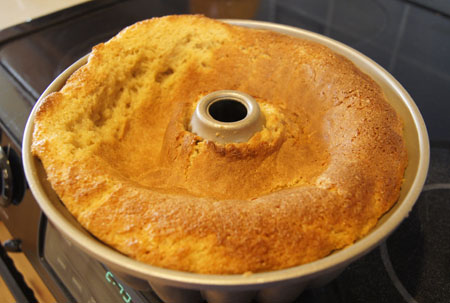 I was so disappointed! This is my planned dessert, and we had company. I showed it to my husband and he sympathized with me.
I was so disappointed! This is my planned dessert, and we had company. I showed it to my husband and he sympathized with me.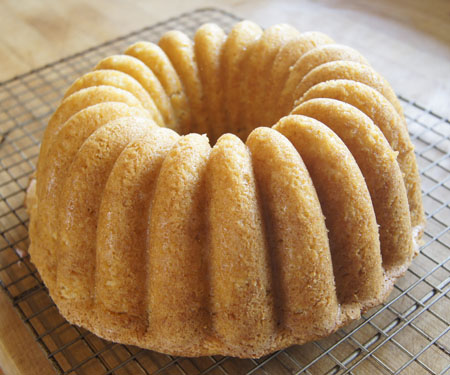 It’s beautiful!
It’s beautiful!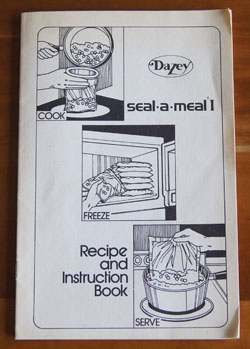
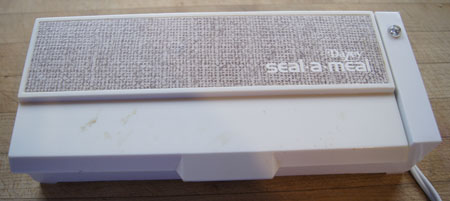
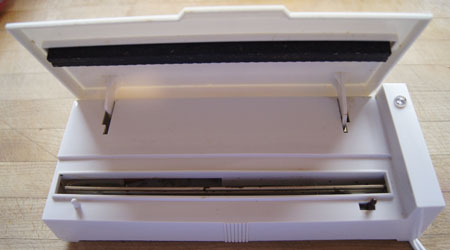 Note the two pegs in the above photo, the white one on the left and the black one on the right. Special bags, or “pouches”, were sold that had holes along the side to latch on to the bags. I have a small roll of this type of this bag material – as you can see in the photo below. See the little round hole in the bottom right corner of the photo?
Note the two pegs in the above photo, the white one on the left and the black one on the right. Special bags, or “pouches”, were sold that had holes along the side to latch on to the bags. I have a small roll of this type of this bag material – as you can see in the photo below. See the little round hole in the bottom right corner of the photo?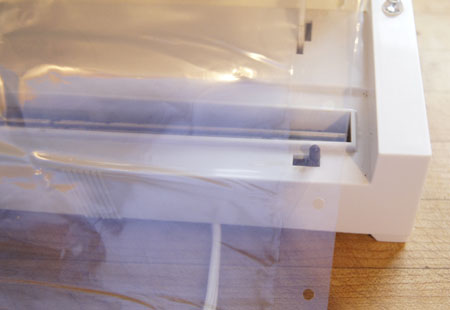

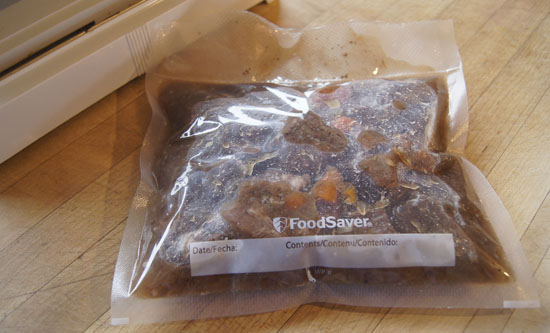 The filled bags are now in my freezer, ready for a couple quick meals.
The filled bags are now in my freezer, ready for a couple quick meals.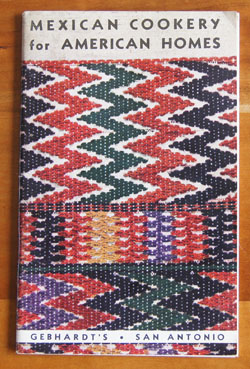
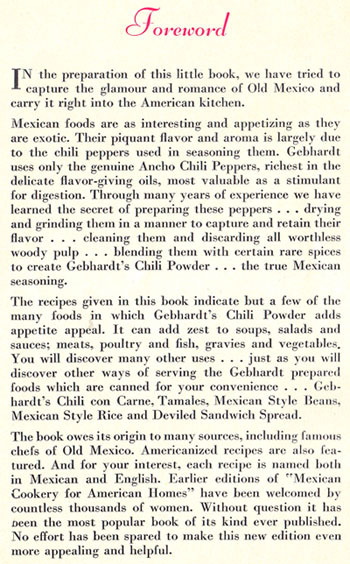
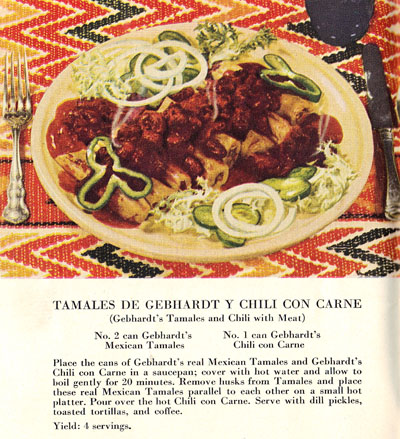
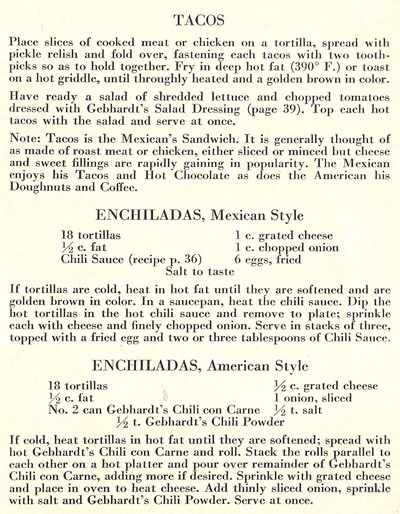
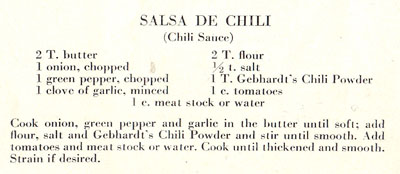
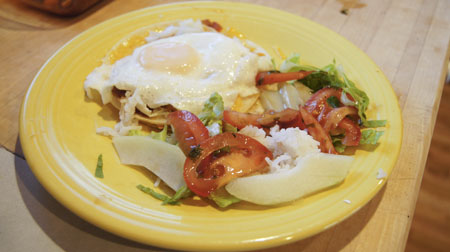
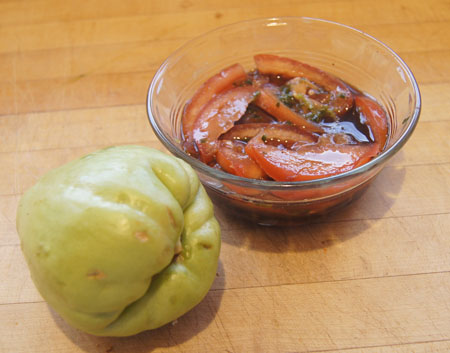 Here’s the sliced, peeled chayote. It tastes like something between an apple and a pear, crunchy and interesting.
Here’s the sliced, peeled chayote. It tastes like something between an apple and a pear, crunchy and interesting. 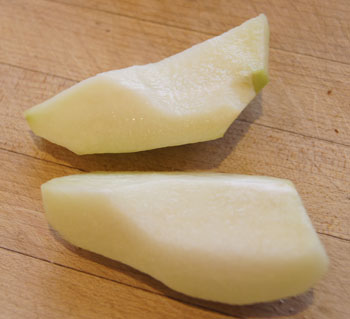 My tomato vinaigrette is a modification of a recipe for “Spicy Balsamic Tomato Salad” that I found on allrecipes.com.
My tomato vinaigrette is a modification of a recipe for “Spicy Balsamic Tomato Salad” that I found on allrecipes.com.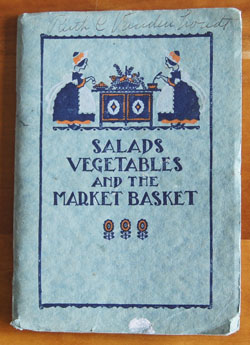
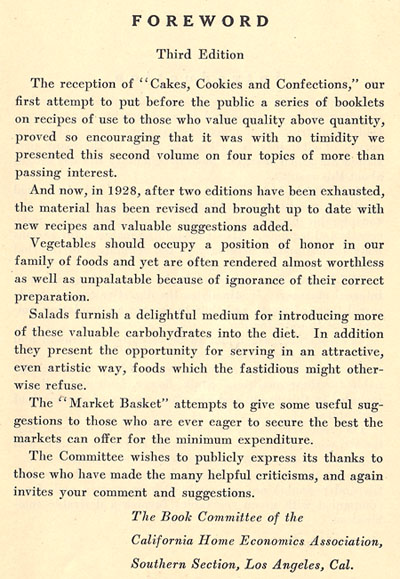
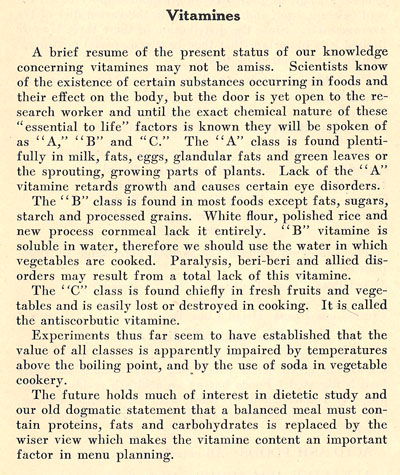
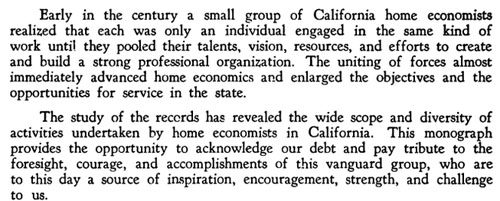

 The following is the beginning of an appendix in The California Home Economics Association, yesterday, today, and tomorrow, 1921-1961. It dilineates the early introduction of home economics to California schools. Note the last entry on “hand and machine sewing”. I learned sewing (as well as cooking) in junior high in California in the 1950s.
The following is the beginning of an appendix in The California Home Economics Association, yesterday, today, and tomorrow, 1921-1961. It dilineates the early introduction of home economics to California schools. Note the last entry on “hand and machine sewing”. I learned sewing (as well as cooking) in junior high in California in the 1950s.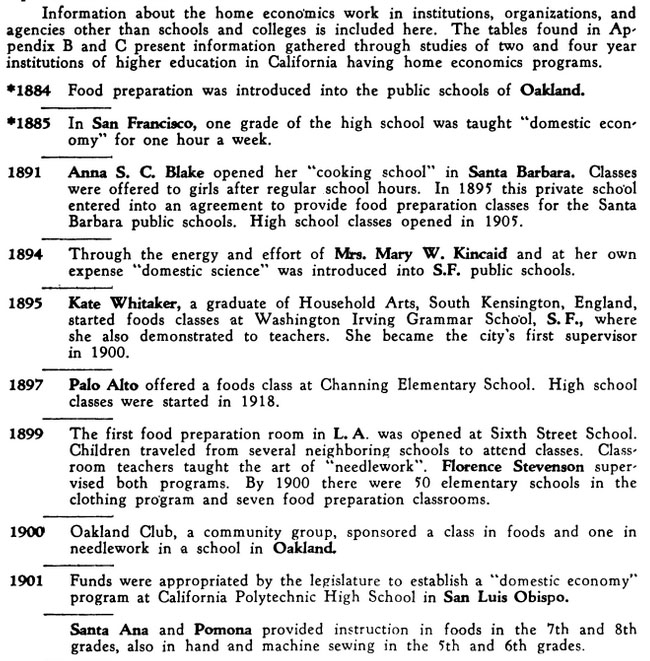 By the 1960s, American home kitchens are influenced by many changes: industrialization, urbanization, suburbanization, working mothers, a higher level of education, and automation.
By the 1960s, American home kitchens are influenced by many changes: industrialization, urbanization, suburbanization, working mothers, a higher level of education, and automation.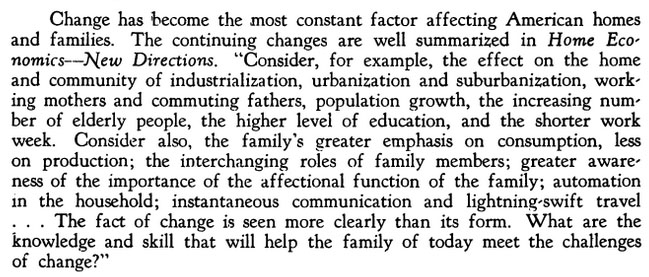
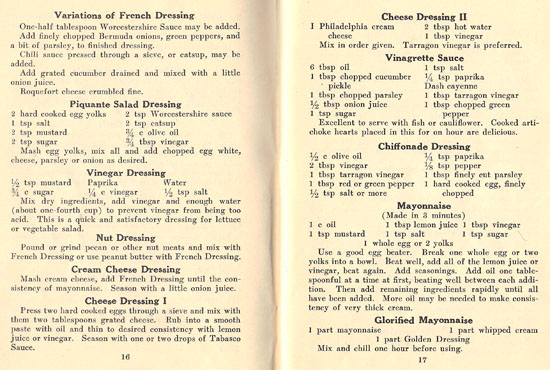
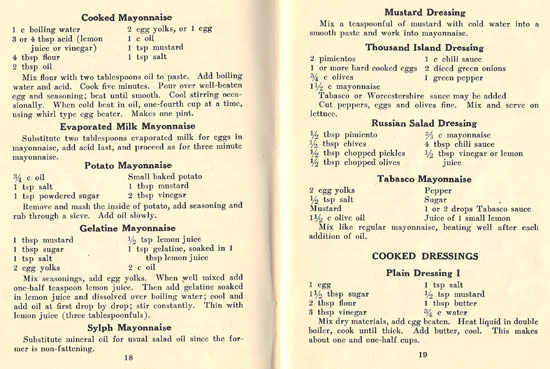 Some salads have fancy presentations, like Butterfly Salad, or Banana Canoes.
Some salads have fancy presentations, like Butterfly Salad, or Banana Canoes.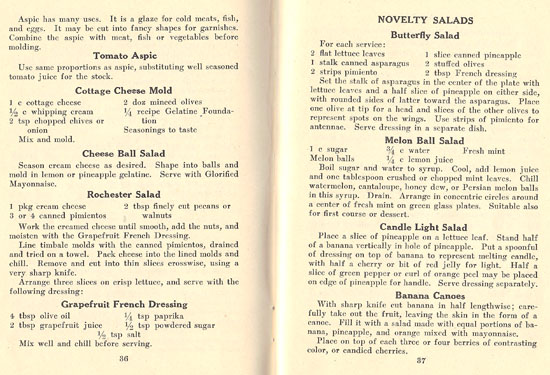
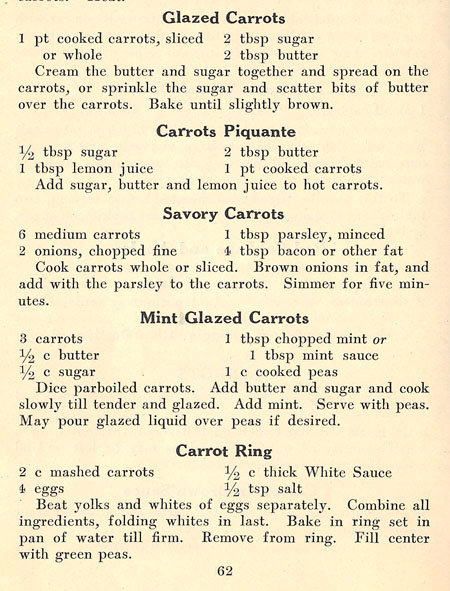 Glazed Carrots with Peas with Mint
Glazed Carrots with Peas with Mint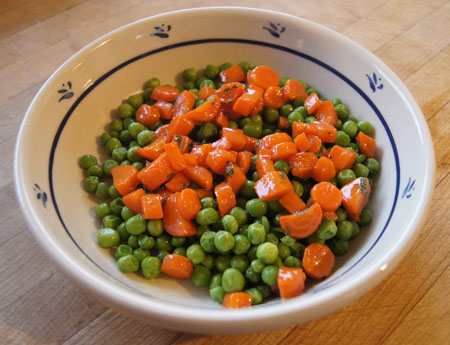 I thought these were good – hubby was less impressed. I love the colors and the bright mint flavor. Yes, they were a bit sweet, but I thought it nice for a change.
I thought these were good – hubby was less impressed. I love the colors and the bright mint flavor. Yes, they were a bit sweet, but I thought it nice for a change.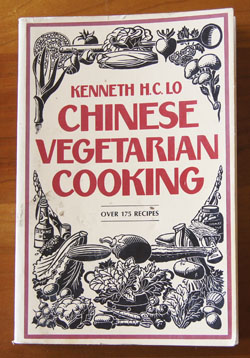
 I decide to look for red-in-snow at the Asian Seafood Market on 28th St. in Boulder. Nothing under that name in the store, but I did find pickled mustard greens:
I decide to look for red-in-snow at the Asian Seafood Market on 28th St. in Boulder. Nothing under that name in the store, but I did find pickled mustard greens: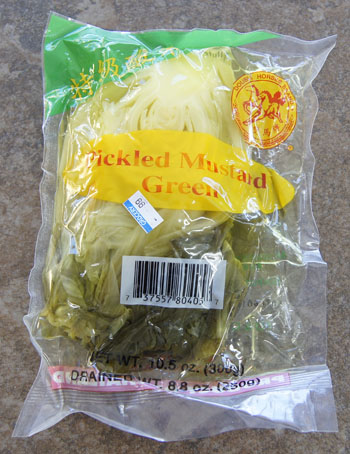
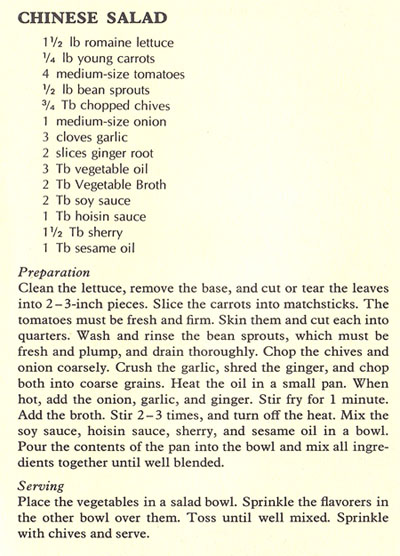 I pick up some bean sprouts for this salad at the Asian Seafood Market. I really like that this market sells bean sprouts in bulk – most stores sell them in packages, and the two of us can never finish them before they go bad. I don’t find chives, but pick up a bunch of green onions; these too are always good a the Asian Seafood Market. I get some ginger, and a big baggie of peeled garlic ($1.50!). I decide to put some of the pickled mustard greens in the salad to see what they taste like. I don’t have and sherry, but decide to substitute with a little rice wine vinegar. It’s not in the salad, but I buy a big bag of bok choy (the storeowner always gives me grief when I just buy a couple bok choys).
I pick up some bean sprouts for this salad at the Asian Seafood Market. I really like that this market sells bean sprouts in bulk – most stores sell them in packages, and the two of us can never finish them before they go bad. I don’t find chives, but pick up a bunch of green onions; these too are always good a the Asian Seafood Market. I get some ginger, and a big baggie of peeled garlic ($1.50!). I decide to put some of the pickled mustard greens in the salad to see what they taste like. I don’t have and sherry, but decide to substitute with a little rice wine vinegar. It’s not in the salad, but I buy a big bag of bok choy (the storeowner always gives me grief when I just buy a couple bok choys).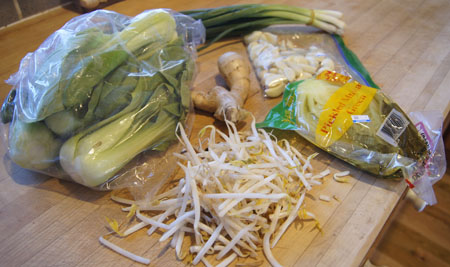
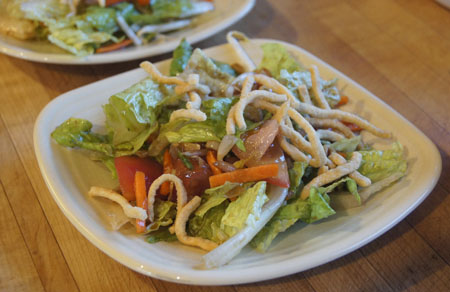
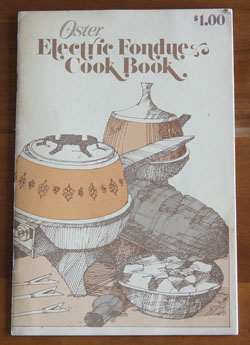 That lovely decade when my husband and I were in our twenties . . . many memories. Among those memories are certain yummy and often fattening foods. Like fondues. Our party friends with us, the fondue pot filled with a beer-cheese-spice mixture, big, slurpy, cheesy mouthfuls scooped up by homemade tortilla chips. Back in the day. It was fun.
That lovely decade when my husband and I were in our twenties . . . many memories. Among those memories are certain yummy and often fattening foods. Like fondues. Our party friends with us, the fondue pot filled with a beer-cheese-spice mixture, big, slurpy, cheesy mouthfuls scooped up by homemade tortilla chips. Back in the day. It was fun.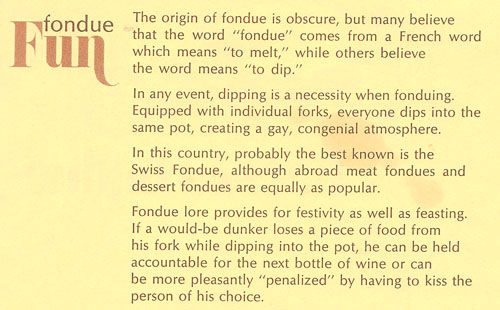
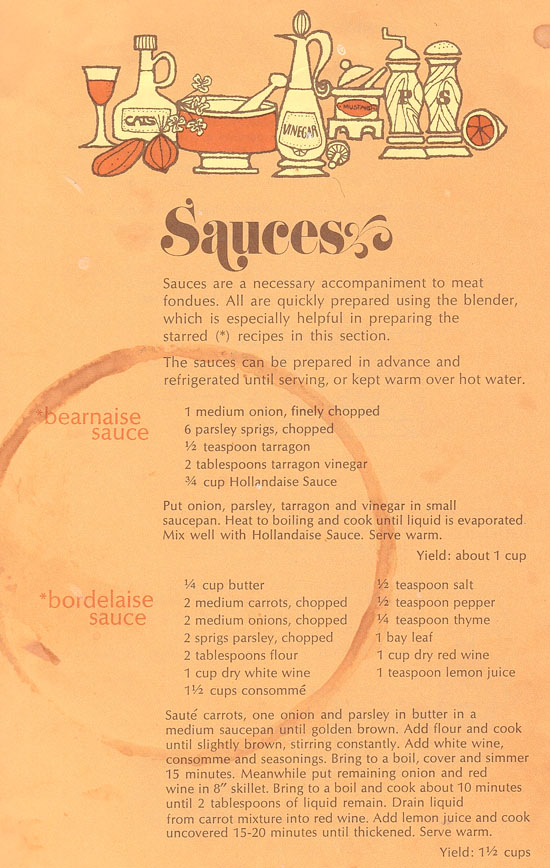
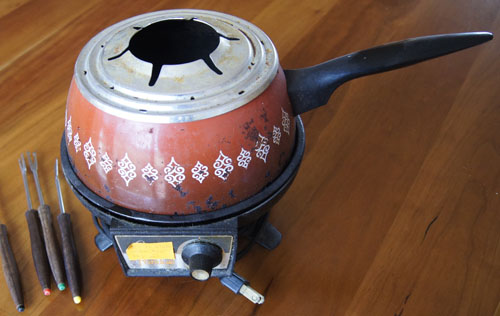 Here is my chunky bernaise sauce:
Here is my chunky bernaise sauce: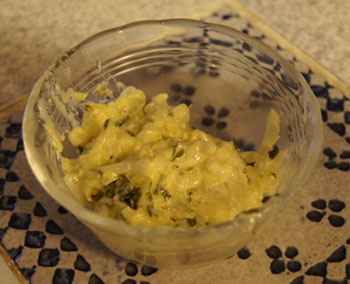
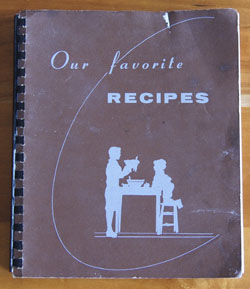
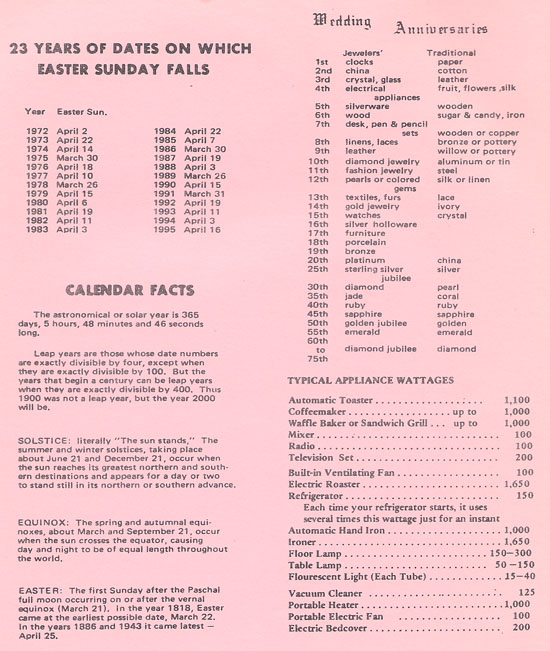
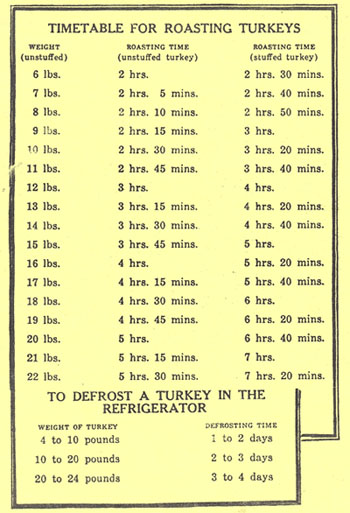
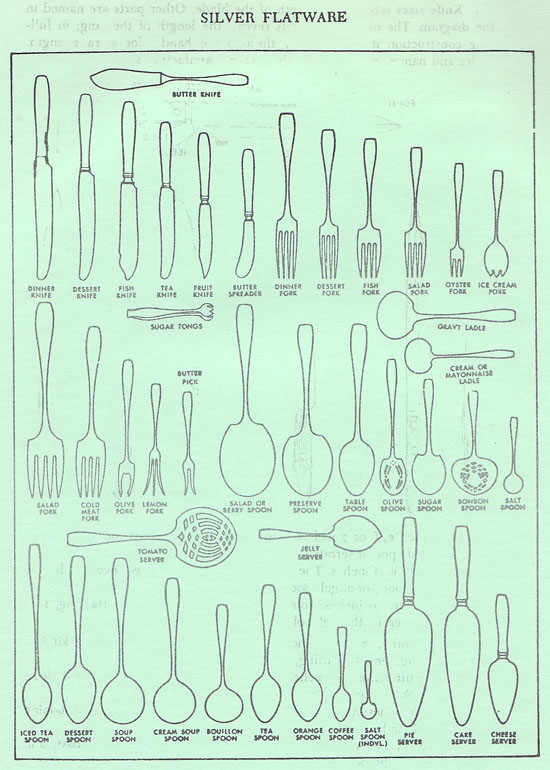
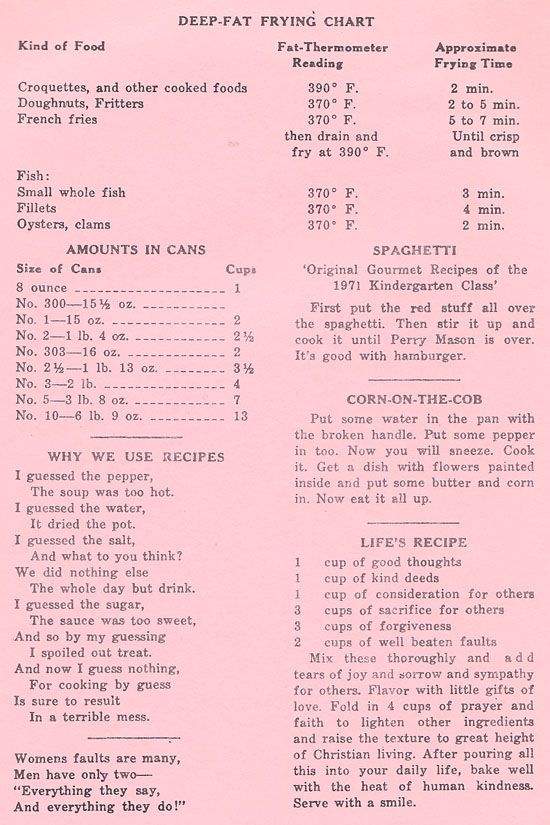
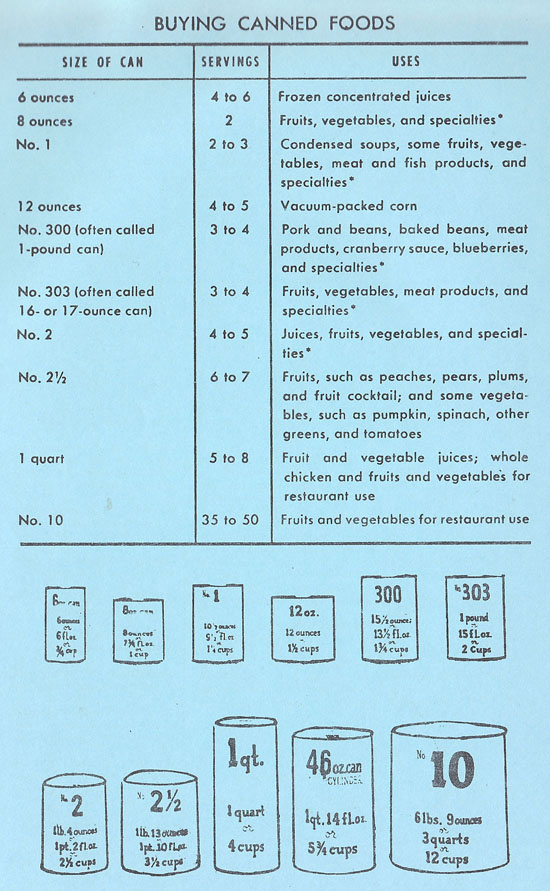
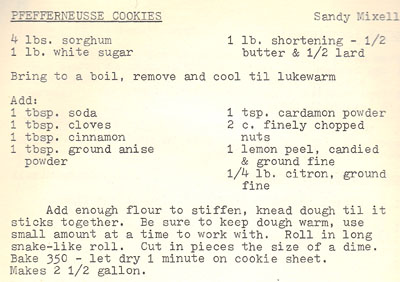


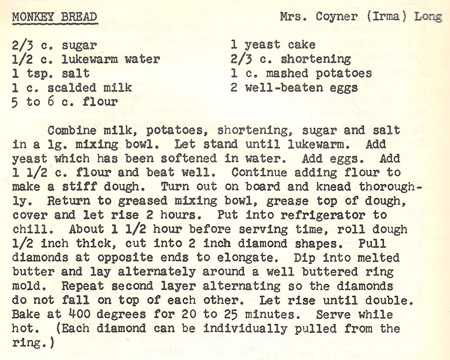 I think there is a bit too much sugar in this recipe, I prefer butter to shortening (and less), I will use active dry yeast yeast, I want to make only half a recipe, and I want to use my breadmaker. My version of this recipe is below.
I think there is a bit too much sugar in this recipe, I prefer butter to shortening (and less), I will use active dry yeast yeast, I want to make only half a recipe, and I want to use my breadmaker. My version of this recipe is below.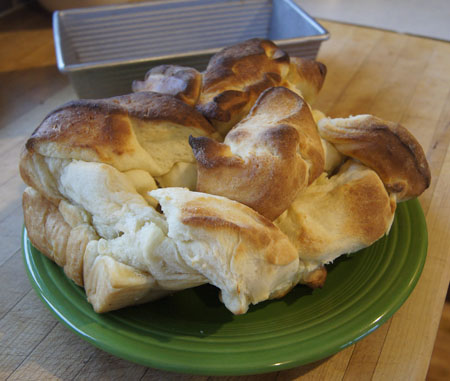 As you can see, my bread rose crazily! That’s why I suggest a bundt pan next time. Usually a 9×5-inch loaf pan is big enough for 2 1/2 cups flour – but this time it obviously wasn’t!
As you can see, my bread rose crazily! That’s why I suggest a bundt pan next time. Usually a 9×5-inch loaf pan is big enough for 2 1/2 cups flour – but this time it obviously wasn’t!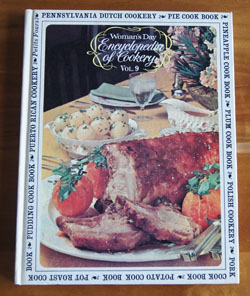 I have a set of twelve Encyclopedia of Cookery volumes and this is the ninth of that set – I covered the first eight in previous posts. I’ve enjoyed all of them so far! This volume covers curious and helpful information about foods from pec(tin) to pur(ée).
I have a set of twelve Encyclopedia of Cookery volumes and this is the ninth of that set – I covered the first eight in previous posts. I’ve enjoyed all of them so far! This volume covers curious and helpful information about foods from pec(tin) to pur(ée).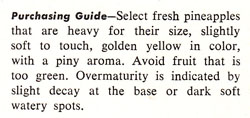 Pimientos are red bell peppers. It is interesting that red bell peppers are actually green bell peppers that have reached a further state of maturity. The pimiento variety of bell peppers are heart-shaped and very sweet. You can find them canned in the markets, often in small glass jars. I usually substitute fresh red bell peppers for pimientos in recipes.
Pimientos are red bell peppers. It is interesting that red bell peppers are actually green bell peppers that have reached a further state of maturity. The pimiento variety of bell peppers are heart-shaped and very sweet. You can find them canned in the markets, often in small glass jars. I usually substitute fresh red bell peppers for pimientos in recipes.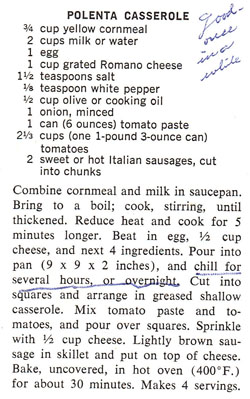
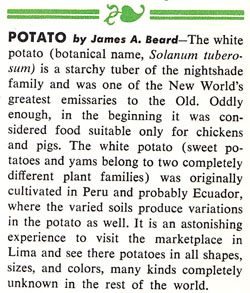 From the same article by Beard: “Eliza Acton, in her magnificent book of Modern Cookery, published in London in 1848, quotes the following ‘genuine Irish receipt’ for boiling potatoes”:
From the same article by Beard: “Eliza Acton, in her magnificent book of Modern Cookery, published in London in 1848, quotes the following ‘genuine Irish receipt’ for boiling potatoes”: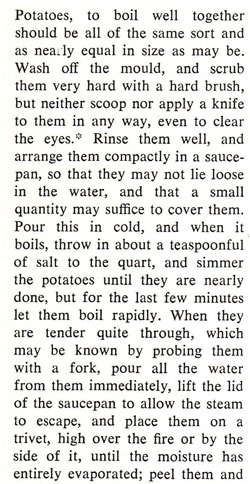
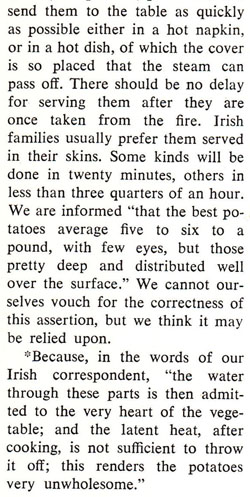
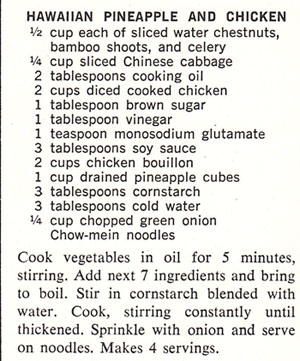
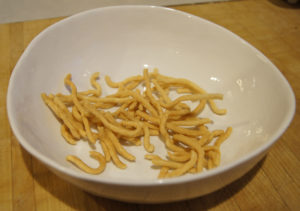
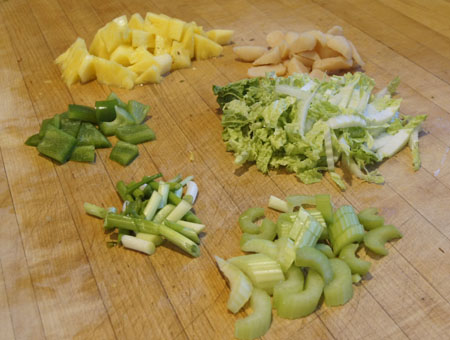
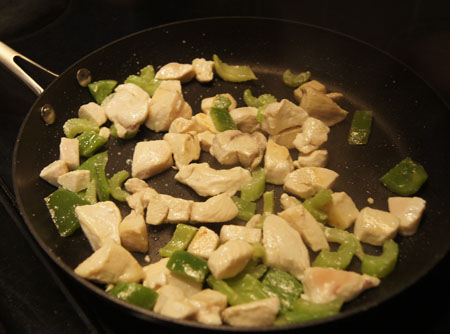 The completed dish:
The completed dish: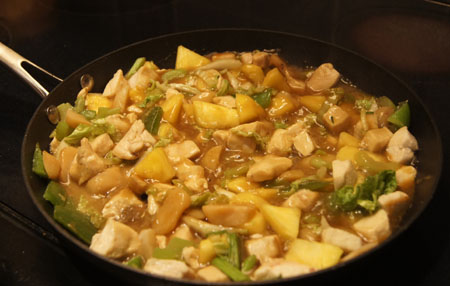 This was excellent, worth making again! It’s fast and easy, and I like the fresh pineapple in it. I liked it over crunchy chow mein noodles, but any Oriental noodle or rice would also work well with this dish.
This was excellent, worth making again! It’s fast and easy, and I like the fresh pineapple in it. I liked it over crunchy chow mein noodles, but any Oriental noodle or rice would also work well with this dish.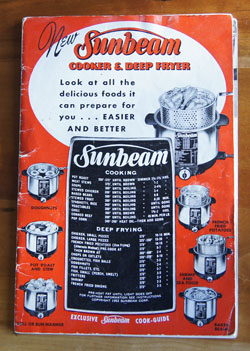 My Sunbeam deep fryer spends most of its time down on a shelf in the basement. It is greasy and old and just the thought of deep-frying sends fears of high calorie food into my healthy eating plan. Even though I read (and mostly believed)
My Sunbeam deep fryer spends most of its time down on a shelf in the basement. It is greasy and old and just the thought of deep-frying sends fears of high calorie food into my healthy eating plan. Even though I read (and mostly believed) 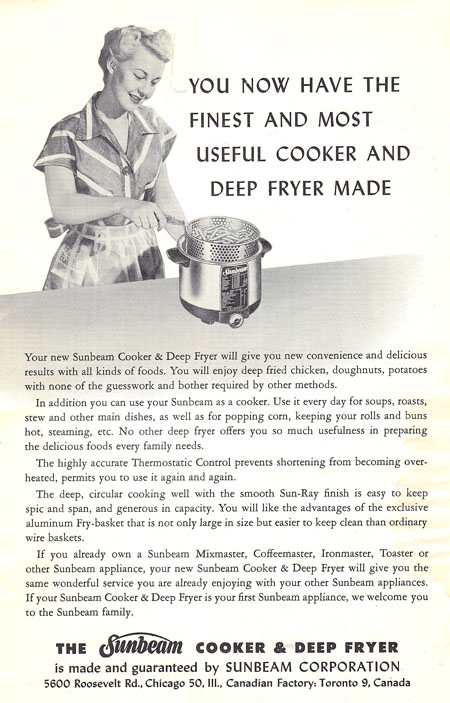 The Sunbeam Cooker and Deep Fryer booklet advises the cook to use solid vegetable shortening, such as “Spry”, a product I discussed in my blog entry for the 1942 cookbook
The Sunbeam Cooker and Deep Fryer booklet advises the cook to use solid vegetable shortening, such as “Spry”, a product I discussed in my blog entry for the 1942 cookbook 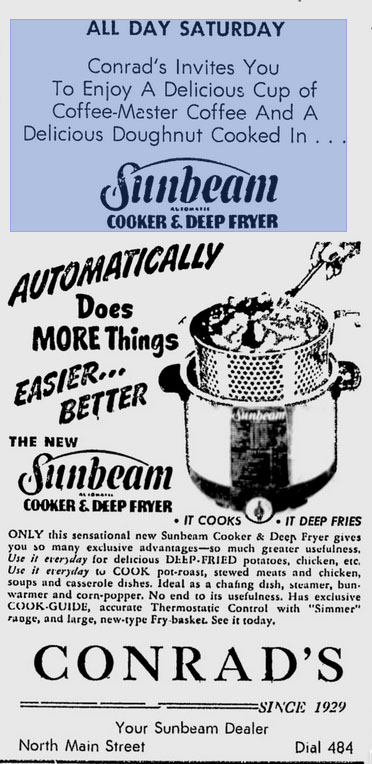
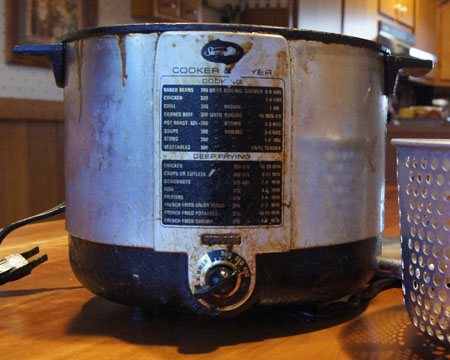 Cleaned up, it doesn’t look a whole lot better. Some of the paint came off before I realized it was happening.
Cleaned up, it doesn’t look a whole lot better. Some of the paint came off before I realized it was happening.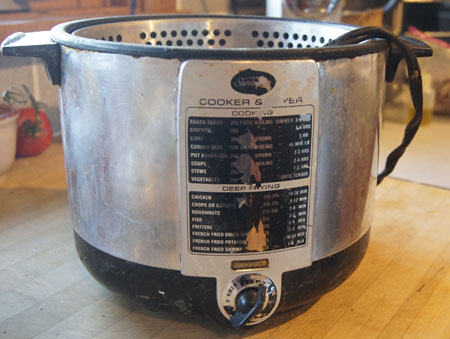 Below is the scanned-in recipe for Old Fashioned Doughnuts in the Sunbeam Cooker and Deep Fryer booklet. I can tell from all the grease splashes that I have used the doughnut recipe before:
Below is the scanned-in recipe for Old Fashioned Doughnuts in the Sunbeam Cooker and Deep Fryer booklet. I can tell from all the grease splashes that I have used the doughnut recipe before: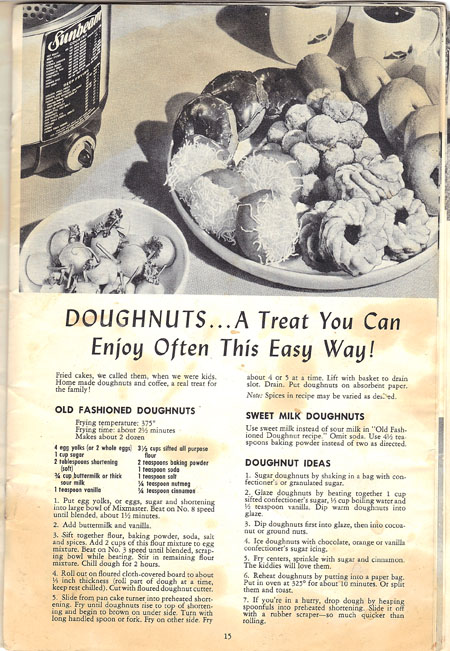
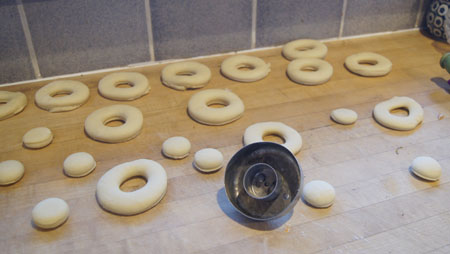 Here are the doughnuts cooked and glazed. I found out on the next batch that it helps to keep the glaze hot so that it covers the doughnuts better. These look a bit sloppy, but they tasted delightful!
Here are the doughnuts cooked and glazed. I found out on the next batch that it helps to keep the glaze hot so that it covers the doughnuts better. These look a bit sloppy, but they tasted delightful!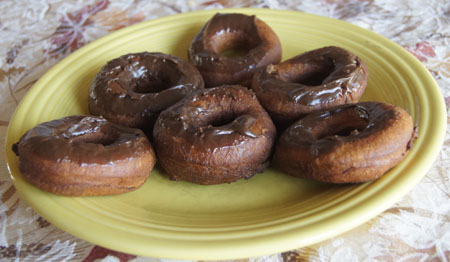 I cooked the “Old Fashioned Doughnuts” too. They were sweeter with a nice hint of spices. I recommend both recipes!
I cooked the “Old Fashioned Doughnuts” too. They were sweeter with a nice hint of spices. I recommend both recipes!